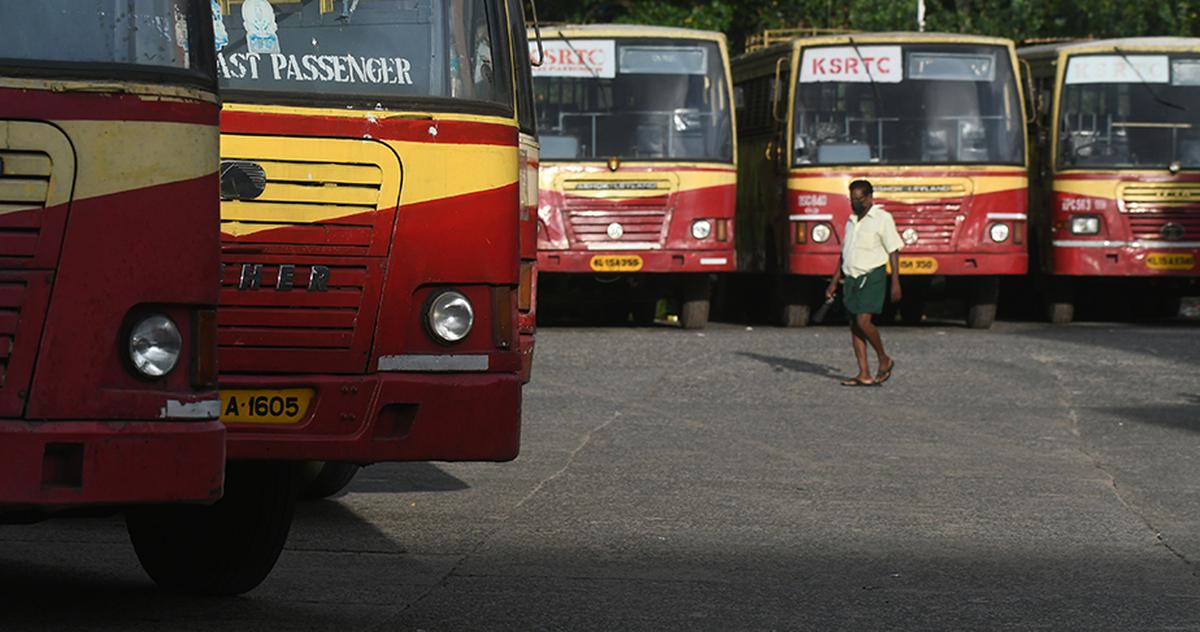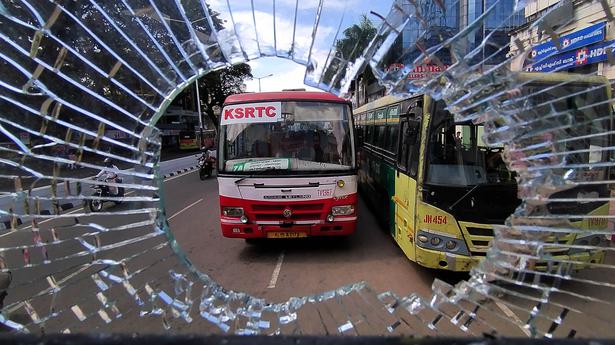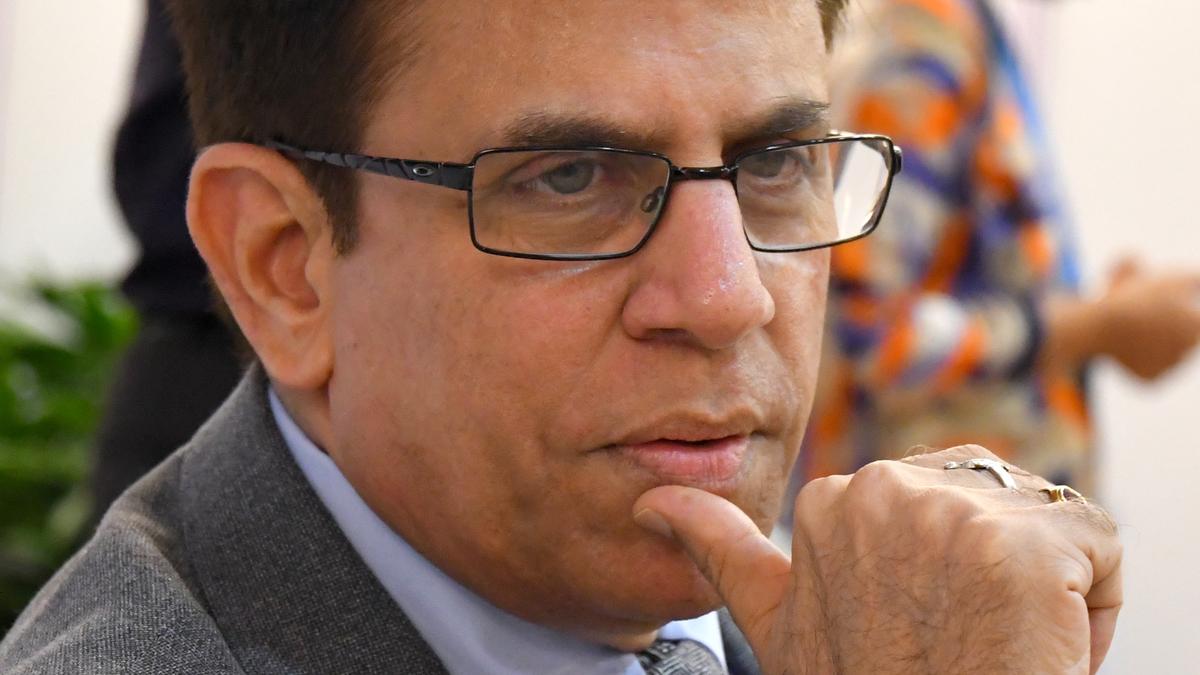The new system, as per the Motor Transport Workers Act 1961, envisages utilizing the optimum efficiency of employees
The new system, as per the Motor Transport Workers Act 1961, envisages utilizing the optimum efficiency of employees
The story so far: The public transportation system in the country has long been beset with issues, although the situation varies from one state to another. In the case of Kerala, the state public transport corporation- Kerala State Road Transport Corporation (KSRTC) – has always been in the limelight for all wrong reasons, plagued as it is by chronic issues ranging from militant trade unionism to mounting debts which often prevent requisite investments in maintaining and upgrading the fleet on time.
The Corporation’s latest decision to implement a 12-hour single-duty system for employees has triggered another round of protests with unions putting up stiff resistance to the move. The management however has implemented the new system on an experimental basis at Parasala depot in Thiruvananthapuram from October 1.
Also read: 12-hour duty: KSRTC management, unions stick to their guns
What is the 12-hour single-duty system?
The new system, as per the Motor Transport Workers Act 1961, envisages utilizing the optimum efficiency of employees. As per the existing system, the employees will have to work only eight hours and they can opt for double-duty after the first eight hours. Making use of this system, the majority of the employees – conductors and drivers – used to take double-duty and at times three duties at one go. In short, an employee will have to report for duty for only three days if he/she chooses double duty in three days.
In the 12-hour single-duty system, employees will have to spend around 12 hours in the office, although they would only be on duty for eight hours. The peak hours of the transport Corporation a day are between 7 a.m. to 11. a.m. and 3 a.m. to 8 p.m. As per the old system, an employee will have to take double duty to operate the service of a bus for a whole day. However, by shifting to the new system, the management can judiciously make use of the working hours of employees during peak hours without going for double duty. Therefore, the original working hours of employees would be the same, but the corporation can save a considerable amount of money.
What is the benefit of the new system compared to the old system?
While the old system requires an employee to work only three days if one chooses double-duty (16 hours a day), the present system demands their attendance six days a week by limiting the working hours to eight hours per day.
The Corporation maintains that the single duty system would increase the productivity of employees and reduce the risk of accidents caused by work-related stress. Further, employees working beyond the allotted eight hours would be eligible for overtime allowance, making it a win-win situation for the Corporation as well as the workforce.
Commuters jostling for space in a KSRTC bus
| Photo Credit: THULASI KAKKAT
The KSRTC has around 5265 buses, but only an average of 3,800 buses are operated due to the lack of manpower. By switching over to the single duty system, KSRTC would be able to operate around 800 more buses by effectively deploying the workforce during peak and slack hours. For instance, if around 20 buses are pressed into service on the Thiruvananthapuram-Nedumangad route during peak hours (one bus every three minutes), the Corporation requires only three buses during slack hours (one bus every 20 minutes). As per the old system, most of the employees will be idle during the slack hours. However, the single duty system would enable the Corporation to make optimum use of the employees by deploying them judiciously during peak and slack hours.
Also read: Opposition walks out over KSRTC’s loss of public commitment
Why have the employees raised a banner of revolt against the new system?
Simply put, the old system was more convenient for them. However, the new system demands their service six days a week and they will have to spend more time in the office.
Will the new system will help the Corporation buck the trend of making losses every month?
The Corporation will be able to raise additional revenue of up to ₹25 crore per month by switching to the new system and it will reduce the Corporation’s dependence on the State government to some extent in terms of financial assistance. However, more similar measures are needed to turn the ailing Corporation around and make it profitable.
What are the main reasons for the poor performance of the Corporation in terms of revenue?

KSRTC buses parked at Ernakulam bus stand following a strike by KSRTC unions
| Photo Credit: THULASI KAKKAT
The Corporation has registered a loss of ₹48.26 crore in November 2021, ₹42.34 crore in December 2021, ₹50.27 crore in January 2022, ₹68.78 crore in February 2022, and ₹132.18 crore in March 2022. It could utilize only around 70-75 percent of the fleet per day due to the manpower crunch. At least around 4,250 buses can be operated daily if there are enough employees. Further, of the total buses, around 70 percent of them are operated as ordinary services, the majority of which are loss-making. The Corporation cannot stop all the loss-making services all of a sudden based on mere profit-loss-based analysis.
For instance, a bus is equal to 12 cars and each bus emits 3 kg of carbon emission per kilometer, whereas it would be a total of around 12 kg for 12 cars. An effective and reliable public transport system will nudge passengers to switch to public transport from private vehicles. This would not only reduce the carbon emission, but also decongest the roads, and save considerable man hours spent on roads during peak hours, apart from reducing accidents and subsequent spending. All these are the rich dividends of an effective public transport system but are not factored into the profit-loss statement highlighted by critics, according to the Corporation.
Will the new company KSRTC-SWIFT, a new entity floated by the Corporation to run long-distance buses of the Corporation in the first phase and then electric buses on city routes, bring any noticeable change?

Transport Minister Antony Raju flagging off the new electric buses of KSRTC-SWIFT in Thiruvananthapuram
| Photo Credit: PRD
The KSRTC will have to spend around ₹18 per km for running buses owned by the KSRTC, while the buses under the KSRTC-SWIFT require only ₹7 per km in terms of human resource expense. The new legal entity is in the right direction and it will function independently within the KSRTC. The plan is to dissolve the company and merge its assets with the KSRTC after 10 years of operation. The revenue would also be used for the requirements of KSRTC employees and for the debt servicing of the Corporation.




